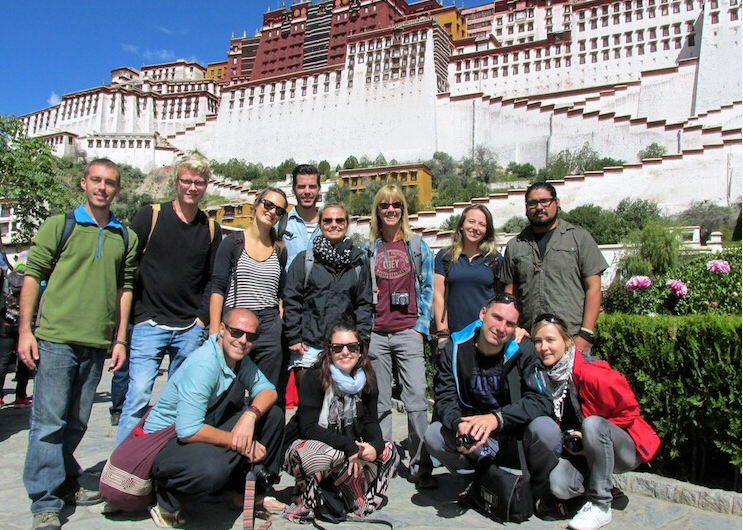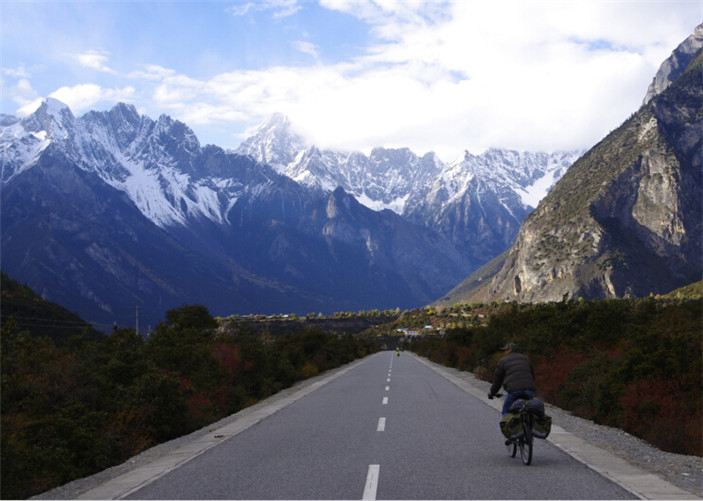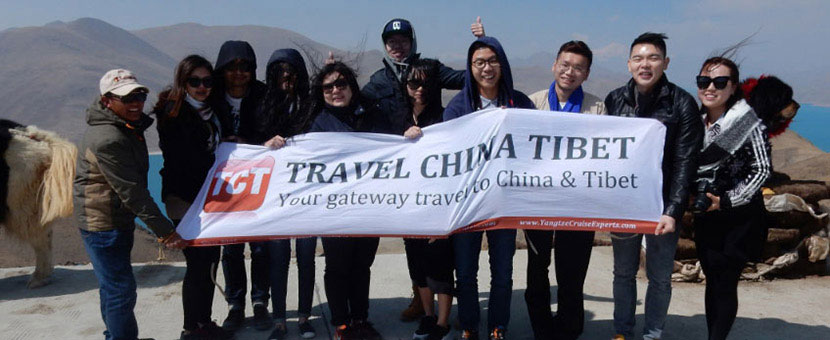Tourism is seen by the Chinese government as a way to bring money and development to chronically poor Tibet. The $4.2 billion high-speed rail project that opened in 2006 and carries travelers from mainland cities (Beijing,Shanghai,Chengdu,Chongqing,Guangzhou) to Lhasa in about two days lies at the heart of that goal.
In 2014, the number of Chinese tourists to Tibet jumped 9 million while that of foreign tourists grew to 270,800, bringing in 9.7 billion yuan ($1.5 billion) in tourism revenues, official statistics show. Authorities see developing tourism as crucial to the economic future of Tibet and have set a goal of attracting 15 million tourists a year by 2015, generating up to 18bn yuan ($3 billion), in a region with a population of just 3 million. Also by 2015 Beijing hopes to create 300,000 new tourism jobs and double the Income from tourism to around $2.5 million. Officials have promised to increase tourism fourfold between 2010 and 2020, to 20 million visitors a year.
Tibet opened to tourists in 1984. For a while tourists could freely go where they wanted as long as the could work out the transport. At that time many of Tibet’s religious sites were still in ruins after the Cultural Revolution. A record 4 million tourists visited Tibet in 2007, a 60 percent jump from the previous year, bringing in $650 million, a 70 percent jump from the previous year. Much of the increase was attributable to the new train. This increase was so high, abrupt and unexpected that the Chinese government had to order hundreds of new tour buses. In 2004, 1.22 million tourists visited Lhasa, 92 percent of them were Chinese, many of whom came from big cities such as Beijing and Shanghai. In 2002, 720,000 Chinese tourists visited Tibet, a 30 percent increase from 2001, and 140,00 foreign tourist visited, a 2.4 percent increase. Only 47,000 came in 1987.
Because reporters are often barred from entering Tibet, foreign tourists are often the only source of information of what is going inside the region. Some tourists have gotten in trouble for their politics. In the mid 1990s, two American tourists were interrogated for four days after they gave a monk a tape recording of a speech by the Dalai Lama. Other copies of the tape and pictures of the Dalai Lama were impounded, and the Americans were deported to Nepal.

Tourism in Tibetan Areas
In Tibetan areas of Sichuan and Yunnan, people building hotels, souvenir shops and restaurants and luring tourists. On a proportional basis more jobs are taken by Tibetans here than in Lhasa and tensions between the Tibetans and Chinese seem mild.
In these Tibetan areas, local Tibetans have a direct hand in the tourism industry, running trekking companies and restaurants. An NGO runs a programs for rural children teaching them English and basic skills so they can get jobs. Many of the Chinese are poets and hippy types who want to escape the rat race and live in a place fresh air and beautiful scenery and a more likely to be open to Tibetan culture.
Chinese Tourists in Tibetan Areas
As Chinese grow wealthier and become better traveled, many are seeking more authentic experiences than tour groups can offer. These tourists, armed with Gore-Tex outerwear and telephoto camera lenses, are beginning to visit China's remote regions - many populated by minority groups - including Sichuan, Yunnan and Tibet. In Beijing, in Shanghai, it’s all about materialism...But here, its different. There’s a different culture and different values. One tourist slogan aimed at Chinese tourist reads: “Take a Trip to the Holy Land.”
Road Condition in Tibet
Road conditions in Tibet have also improved significantly in recent years, especially in the cities and roads between big cities. Most of the famous sightseeing places have asphalt-paved road, such as the Lhasa area, Tsetang, Nyingchi, Gyangtse town, Shigatse, Chamdo, etc.
In Lhasa minibuses are the main means of transportation and it is easy to hire a taxi. Pedicabs are unique vehicles to tour around the city of Lhasa. Bikes can be easily hired at Lhasa at most hostels. Inside Tibet, there are now regular buses shuttling between major towns.
While getting to Lhasa is straightforward, transport to some remote mountain areas or other isolated religious destinations, such as Ngari prefecture, may not be convenient. Public bus routes are not developed like those you see in Beijing. The road gets bumpy and dusty. It will be even worse in rainy seasons. If you are going to those places, renting a good quality Land Cruiser from local travel agency is recommended. The price is judged by day. The conditions of minor roads are only passable by jeeps. Due to the rough road condition from Tingri to Everest Base Camp, 4WD plays main role for Everest Base Camp tours.

Hotels and Guesthouses in Tibet
Tibet has quite nice accommodation in Lhasa from guest house to super 5 stars, and in Shigatse 4-star rated hotel is also available, but other places have only guesthouse or 3-star level hotels. Some remote areas has only simple guesthouse or tent available. .
Tibetan guest houses and motels used by locals contain rooms with a few cots and an iron stove with buckets full of sheep pellets for fuel. Some have an outdoor latrine. Some don't even have that. When they are toilets they usually don't work. Guests sometimes use blow torches to cook meals in their rooms.
Cheap guesthouses in Tibet off the beaten track often resemble prisons. There is usually no running water and no electricity at night. The floors are damp; the sheets are smelly. For washing guests are given a pail of water. When there is electricity light comes from bare light bulbs which don't have switches to turn them off. The worst cheap hotels have human excrement and frozen vomit on the staircases from previous guests who thought is was too cold to go outside and use the toilet.
Tibet Closed to Tourists in 2011
Due to the unrest in March of 2008, foreign tourists were banned from traveling to Tibet for each March, and the re-open is usually from early April.












